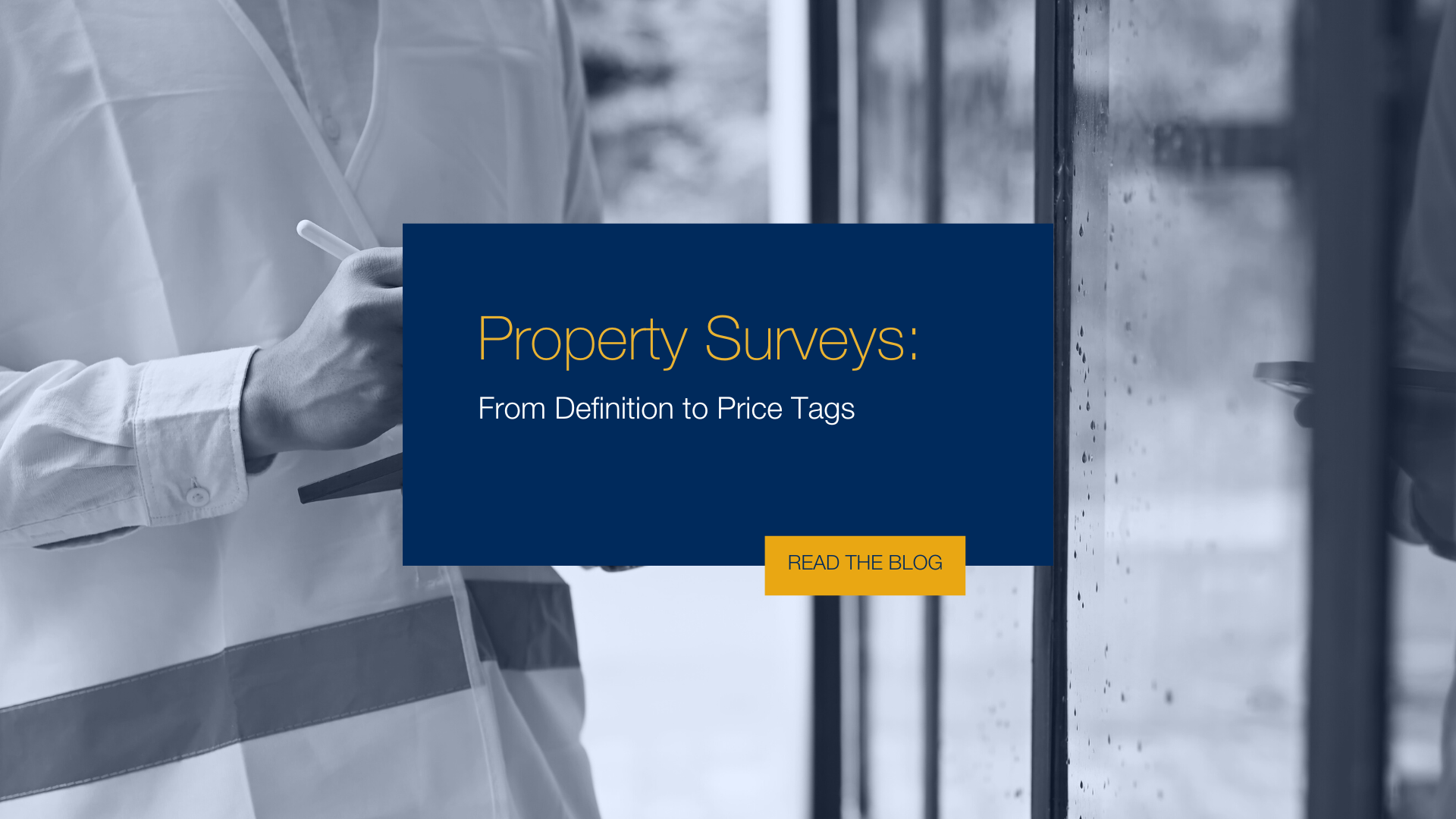Property Surveys Uncovered: From Definition to Price Tags
 By The Cooper Adams Team
Subscribe to newsletter
By The Cooper Adams Team
Subscribe to newsletterWhat is a house survey and why is it important?
A property survey is a detailed inspection of a property to assess the condition of the building. It is carried out by a Chartered Surveyor in order to highlight any issues or defects that could affect its value or cause problems further down the line; and to confirm that the property is worth the asking price.
It’s not a legal requirement, but oftentimes considered a smart move to alleviate potential stress and financial outlay in the future especially if there are any questionable aspects of the property’s structure.
When should they happen?
It is typically the home buyers who arrange and pay to have the survey done, once they’ve had an offer accepted by a seller. In theory you can arrange a survey at any point, provided the seller agrees to it, including before you’ve made an offer; but it’s not advised to arrange a survey prior to having your offer accepted.
How much does it cost and how do I arrange a survey?
The first thing you need to establish before reviewing costs is what type of survey you are looking for. The different types of surveys go into different levels of detail, which is reflected in the cost variances.
In addition to this, factors (including but not limited to) your new home's value, size and location can also impact the cost of your home survey. Generally speaking, a house survey can cost anywhere between £400 and £1,500, so it’s a good idea to budget for this in the beginning.
In March 2021, the governing body known as RICS (the Royal Institute of Chartered Surveyors) updated the categorisation of the 3 types of house surveys:
- Level 1 Survey (previously named ‘basic condition report’)
- Level 2 Survey (previously named ‘HomeBuyers Report’)
- Level 3 Survey (previously named ‘Building Survey or Full Structural Survey’)
Type of survey | What do you get? | Which types of property is it good for? | Typical cost |
Level 1 Survey (Condition Report) | A basic report of visible defects and urgent issues | New-build homes and standard homes in good condition and less than 50 years old | £300 - £900 |
Level 2 Survey (HomeBuyer Report) | A more detailed report on the condition of the property, any issues and repairs needed | Standard homes in reasonable condition and less than 50 years old | £400 - £1,000 |
Level 3 Survey (Building or Structural Survey) | A full and comprehensive review of the property’s structure and condition, which can also include estimates of repair costs | Homes older than 50 years, large or unusual properties, and those in poor condition | £630 - £1,500 |
Source: HomeOwners Alliance
If you’re looking at buying a new-build property, it's highly recommended investing (£300-£600) in a snagging survey to highlight any defects or repairs, and check the building is compliant with building regulations. When a snagging survey comes back with any problems, you can ask the developer to fix them before you exchange or complete.
You will need to contact a home surveyor, who will then visit the property to complete the survey. If you don’t have a contact, Sims Williams will be able to advise you on trusted surveyors in your local area.
Top tip:
Choose a surveyor that's a member of a recognised governing body, such the Royal Institution of Chartered Surveyors (RICS)
Level 1 Survey
The Home Survey Level 1 is the most basic - and cheapest - RICS survey available. It is suitable for standard modern properties and relatively new homes that appear to be in decent condition.
Level 1 home surveys give an overview of the property’s overall condition but does not go into detail. It highlights significant issues, risks, urgent defects and potential legal issues but it provides no advice or valuation.
Level 2 Survey
A Home Survey Level 2 is the standard choice for most properties in reasonable condition, less than 50 years old. It provides more detail than Level 1 and is the most popular option, according to RICS. These surveys are ‘non-intrusive’ so the surveyor will only check what’s easily visible.
These surveys can uncover problems that may affect the property’s value and require further investigation like subsidence and damp, as well as include all major parts of the property visible to the surveyor.
There are two types of the RICS Home Survey Level 2. You can purchase with or without a valuation. The report with a valuation will include a market value, an insurance reinstatement figure and a list of problems that the property surveyor believes could impact the value of the property. If you’re buying with a mortgage, your lender will conduct their own valuation, so you may not wish to add this option on to the Home Survey Level 2 as well. Get advice from your estate agent if you’re unsure.
Level 3 Survey
Prior to March 2021, and even today commonly referred to as a full structural survey, this is the most thorough, and most expensive, survey offered by RICS. They are particularly suitable for large or unusual homes and properties older than 50 years, and despite carrying a larger price tag, they could end up saving you thousands of pounds if you find hidden problems.
This comprehensive inspection provides homebuyers with detailed advice on the property’s condition, highlights the identifiable risk of potential or hidden defects and their probable causes, as well as recommendations and advice involving costs and timescales for required repairs.
Survey Secure!
So you committed and invested in having a property survey on your potential new home and now need to know what it means.
RICS follow a 3 tier condition rating to show their findings on each aspect of the property. The 3 condition ratings are:
- Condition Rating 1 – no repair needed
- Condition Rating 2 – defects that need repairing or replacing but are not considered to be serious or urgent
- Condition Rating 3 – defects that are serious and need to be repaired, replaced or investigated urgently
So while having a survey may cost you in the short term, it could mean you avoid facing unexpected costs in the future.
Should the survey reveal any issues, don’t forget that you have a professional estate agent with extensive experience who is working with you, to support and guide you through the whole process - survey queries included. You do not have to make big decisions on your own. Lean on reputable professionals who deal with these occurrences daily. They will provide a clear perspective to distinguish which property concerns are major red flags or minor repair jobs based on their experience and local market knowledge.


